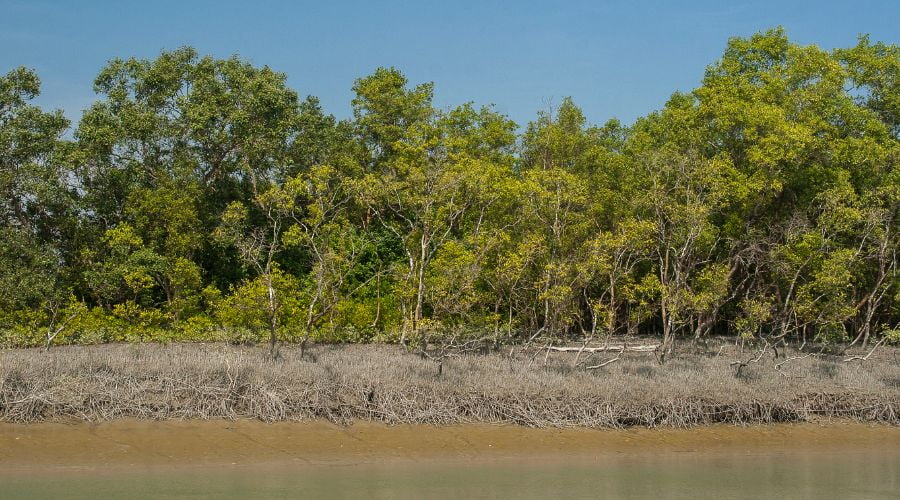3 World Heritage Sites to visit in Bangladesh
Historic Mosque City of Bagerhat and Ruins of Buddhist Vihara at Paharpur are two first World Heritage Sites in Bangladesh, listed in 1985. The lasted site to join the list in 1997 is Sundarbans.
Historic Mosque City of Bagerhat

Situated in the suburbs of Bagerhat, at the meeting-point of the Ganges and Brahmaputra rivers, this ancient city, formerly known as Khalifatabad, was founded by the Turkish general Ulugh Khan Jahan in the 15th century.
The city’s infrastructure reveals considerable technical skill, an exceptional number of mosques, and early Islamic monuments. It contains 360 mosques, public buildings, mausoleums, bridges, roads, water tanks, and other public buildings constructed from baked brick.
The mosques feature terracotta artwork and arabesque. The Sixty Dome Mosque is the largest and the most well known, with actually 60 pillars and 77 domes. Other mosques include the Singar Mosque, the Nine Dome Mosque, the Tomb of Khan Jahan, the Bibi Begni Mosque, Chuna Khola Mosque and the Ronvijoypur Mosque.
Ruins of the Buddhist Vihara at Paharpur

Somapura Mahavihara or Paharpur Buddhist Vihara in Paharpur, Badalgachhi, Naogaon, Bangladesh is among the best known Buddhist viharas or monasteries in the Indian Subcontinent, and is one of the most important archaeological sites in Bangladesh. It was designated as a UNESCO World Heritage Site in 1985. It is one of the most famous examples of architecture in pre-Islamic Bangladesh.
Evidence of the rise of Mahayana Buddhism in Bengal from the 7th century onwards, Somapura Mahavira, was a renowned intellectual centre until the 12th century. Its layout perfectly adapted to its religious function, this monastery-city represents a unique artistic achievement. With its simple, harmonious lines and its profusion of carved decoration, it influenced Buddhist architecture as far away as Cambodia.
The site houses the architectural remains of a vast Buddhist monastery, Somapura Mahavihara, covering 11 hectares . It was an important intellectual centre for Dharmic Traditions, such as Buddhists (Buddha Dharma), Jains (Jaina Dharma) and Hindus (Sanatana Dharma) alike.
The 8.5-hectare complex has 177 cells, viharas, numerous stupas, temples and a number of other ancillary buildings. The outside walls with ornamental terracotta plaques still display the influence of these three religions.
The Sundarbans

Sundarbans is a mangrove area in the delta formed by the confluence of the Padma, Brahmaputra and Meghna Rivers in the Bay of Bengal.
Sundarban Reserve Forest of Bangladesh is the largest mangrove forest in the world. It spans the area from the Baleswar River in Bangladesh’s division of Khulna to the Hooghly River in India’s state of West Bengal.
Four protected areas in the Sundarbans are enlisted as UNESCO World Heritage Sites, they include Sundarbans West (Bangladesh), Sundarbans South (Bangladesh), Sundarbans East (Bangladesh) and Sundarbans National Park (India}
The site is intersected by a complex network of tidal waterways, mudflats and small islands of salt-tolerant mangrove forests, and presents an excellent example of ongoing ecological processes.
The area is known for its wide range of fauna, including 260 bird species, the Bengal tiger and other threatened species such as the estuarine crocodile and the Indian python.



